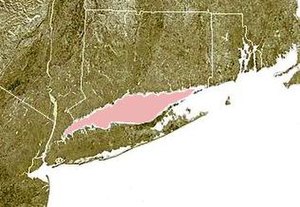Understanding
Long Island Sound’s ‘Dead Zones’
 For the past 25 years,
the Environmental Protection Agency and the Connecticut Department of Energy
and Environmental Protection have been diligently collecting water samples each
month in Long Island Sound (LIS).
For the past 25 years,
the Environmental Protection Agency and the Connecticut Department of Energy
and Environmental Protection have been diligently collecting water samples each
month in Long Island Sound (LIS). Recently, the data have been compiled and analyzed, by UConn associate professors of Marine Science Penny Vlahos and Michael Whitney, and other team members, who have begun the task of digging into the data to better understand the biogeochemistry of the Sound. Part of the analysis, called “Nitrogen Budgets for LIS,” has been published in the journal Estuarine, Coastal and Shelf Science.
Every summer since 1820
or so, LIS has experienced what is called a “dead zone.” In the 1970s and
1980s, the annual appearance of the dead zone saw extensive fish
kills which drew public attention and spurred action by state
environmental agencies.
Dead zones occur when
influxes of excess nutrients such as nitrogen, along with warm, still waters,
lead to bursts of growth in algal populations and their subsequent decay, says
Vlahos.
“Everything in the system is connected. An influx of nitrogen will lead to algal growth, and algae produces organic matter and oxygen that will be consumed by bacteria,” she says.
As bacteria growth
spikes, the populations use oxygen in the area faster than it can be replaced,
resulting in areas of low oxygen, or no oxygen at all. These “hypoxic
areas” or dead zones vary in size, but can stretch from the far western
part of LIS all the way to the middle portion of the LIS estuary in some years.
This study is the first
of its kind to study the complex total nitrogen cycle in the LIS estuary, with
the goal to better understand and predict why some years are worse than others.
Nitrogen enters the
watershed through freshwater inputs from streams, rivers, and wastewater
treatment effluents, as well as through atmospheric inputs. Eighteen rivers
drain into LIS, with roughly 70% of the freshwater that drains into the estuary
coming from the Connecticut River.
Exchange with the open ocean happens primarily with tidal flow through the eastern portion of LIS.
Exchange with the open ocean happens primarily with tidal flow through the eastern portion of LIS.
“However, no one knew
what was happening to nitrogen once it entered the system,” says Vlahos.
Nitrogen can take many
forms depending on the source and conditions — as nitrate (NO3),
nitrite (NO2), ammonia (NH4), in particulate, dissolved,
or gaseous form – which adds even more complexity to understanding the balance
of the element in the LIS system.
The researchers
estimated fluxes and interannual variability based on monthly measurements.
They also calculated the nitrogen stored within LIS.
The results showed that,
surprisingly, less than half the nitrogen entering the LIS is exported to the
adjacent ocean.
“Sixty percent of
nitrogen entering into Long Island Sound is either buried in sediment or is
converted into nitrogen gas and leaves the system via the atmosphere,” Vlahos
says. “Forty percent is exported to the open ocean.”
With this initial study,
policy makers and researchers can begin zeroing in on other questions that need
to be addressed.
“This helps us to start
to answer questions about what happens in Long Island Sound. Where does
nitrogen get used the most? Where should we concentrate our efforts at reducing
nitrogen loads?” Vlahos says.
Understanding this
system will prove valuable for coastal planning in coming years as the human
population of the region rises, and the effects of climate change become more
acute.
Extreme weather events such as super storms can churn up sediment, re-injecting buried nitrogen while excessive amounts of storm water entering LIS can lead to large episodic influxes of nitrogen and other nutrients into the system.
Extreme weather events such as super storms can churn up sediment, re-injecting buried nitrogen while excessive amounts of storm water entering LIS can lead to large episodic influxes of nitrogen and other nutrients into the system.
These complex systems
and processes don’t occur in isolation from each other, says Vlahos.
“Waters in Long Island
Sound are warming faster than the open ocean and a lot of that has to do with
the expansion of the Gulf Stream,” she says.
In anticipating these
events and how they will impact the region’s biogeochemistry, Vlahos says the
first step is making decisions about land use that can affect LIS.
Previous studies, for
instance, support the idea that hypoxia happened as the human population began
to rise in the region, with the start of dead zones coinciding with a period of
time of great deforestation.
The forests were cleared for agricultural purposes and with forest loss, there was also loss of ecosystem services that forests provide, such as slowing the flow of surface water, and filtering out excess nutrients like nitrogen.
The forests were cleared for agricultural purposes and with forest loss, there was also loss of ecosystem services that forests provide, such as slowing the flow of surface water, and filtering out excess nutrients like nitrogen.
This makes Vlahos
hopeful for prospects of addressing the annual dead zones in Long Island Sound.
“If it is human-caused, there is no reason we can’t reverse it and bring it back to at least a minimum,” she says. “There may be a cost for humans being here no matter what, but where there is a will, there is a way and fortunately we are moving in the right direction.”